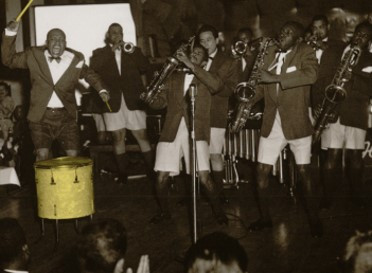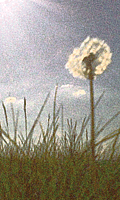


NEWS:
Exclusive session this month from Mark Whitby and Thomas is back after 3 months away
Artist Info
|
Lionel Hampton and his Orchestra  Image from Discogs  Lionel Leo Hampton (April 20, 1908 – August 31, 2002), was a bandleader, jazz percussionist and vibraphone virtuoso. Hampton was born in Louisville, Kentucky. Lionel Leo Hampton (April 20, 1908 – August 31, 2002), was a bandleader, jazz percussionist and vibraphone virtuoso. Hampton was born in Louisville, Kentucky."Hamp" ranks among the greatest names in jazz history and worked with a who's who of jazz musicians, from Benny Goodman to Charlie Parker to Quincy Jones. Hampton moved to Chicago as a child and began his career as a drummer. He relocated to Los Angeles to play drums in Les Hite's band. They soon became the house band for Frank Sebastian's New Cotton Club, a popular L.A. jazz club. During a 1930 recording date in the NBC studios in L.A., Louis Armstrong discovered a vibraphone (which is similar to a xylophone, but with metal bars and a vibrato mechanism). He asked Hampton if he could play it. Hampton, who knew how to play the xylophone, tried it and they agreed to record a few records with Hamp on vibes. Hampton is credited with popularizing the vibraphone as a jazz instrument. In the mid-30s, the Benny Goodman Orchestra came to Los Angeles to play the Palomar Ballroom. John Hammond brought Goodman to see Hampton play. Goodman asked Hampton to move to New York City and join Goodman, Teddy Wilson, and Gene Krupa---who'd already formed a Benny Goodman Trio within the large band---to expand into the Benny Goodman Quartet. The Trio and Quartet were among the first racially integrated bands to record and play before wide audiences; they were just as well received at Goodman's famous 1938 Carnegie Hall concert as was the full Goodman band. While Hampton worked for Goodman in New York, he recorded with several different small groups known as the Lionel Hampton Orchestra as well as assorted small groups within the Goodman band. In the early 40s he left the Goodman organization to form his own touring band. Hampton's band fostered the talents of Illinois Jacquet, Dexter Gordon, Ernie Royal, Jack McVea, Charlie Mingus, Monk Montgomery, Wes Montgomery, Quincy Jones, Benny Golson, Fats Navarro, Kenny Dorham, Clifford Brown, Dinah Washington, Betty Carter, Joe Williams, Arnett Cobb, Earl Bostic, and John Colianni among many others. His wife, Gladys Hampton, was his manager throughout much of his career. Many musicians recall that Lionel ran the music and Gladys ran the business. Hampton's recording of "Flying Home" (1939) with the famous honking tenor sax solo by Jacquet, later refined and expanded by Cobb (1946), is considered by some to be the first rock and roll record. Quincy Jones once stated that Hamp was like a rock and roll musician in that "Hamp would go for the throat every night and the people would freak out". He was known for his tireless energy and his skill on the vibes, drums, and lightning speed two-fingered piano. The bars on the vibraphone are laid out like the piano; Hampton played both instruments the same way. Beginning in the mid-1980s, Hampton and his band started playing at the University of Idaho's jazz concert, which in 1985 was renamed the Lionel Hampton Jazz Festival. In 1987 the University's music college was renamed the Lionel Hampton School of Music, the first and only university music college to be named after a jazz musician. Lionel Hampton died of cardiac arrest at Mount Sinai Medical Center in New York at about 06:15 AM, on August 31, 2002. He was interred in the Woodlawn Cemetery, Bronx, New York. Hampton was a member of Alpha Phi Alpha, the first intercollegiate Greek-letter fraternity established for African Americans. Read more on Last.fm. User-contributed text is available under the Creative Commons By-SA License; additional terms may apply. Artist biography from last.fm Some other places to look for information: last.fm Discogs MusicBrainz |
